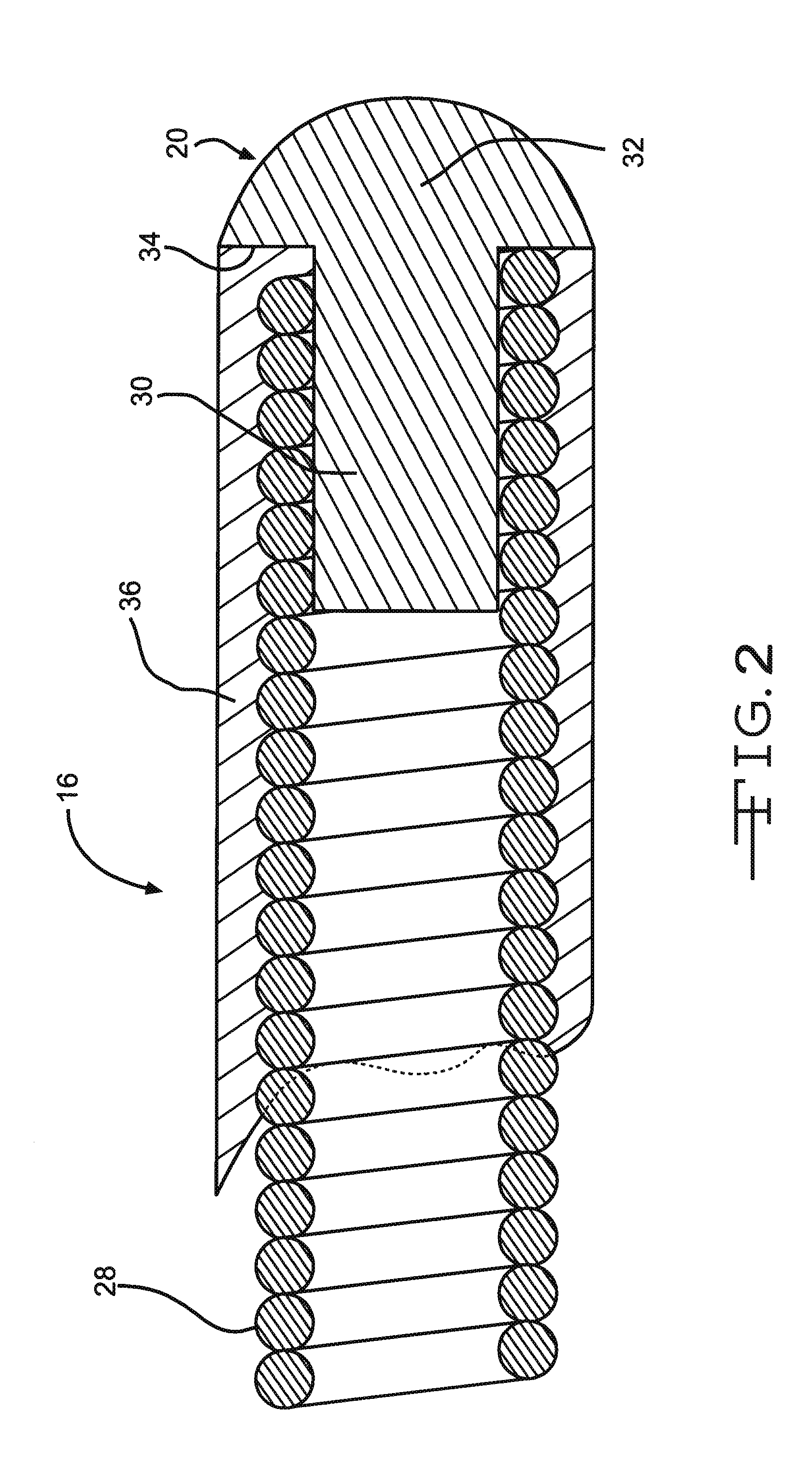Method For Providing An Implantable Electrical Lead Wire
a technology of electrical lead wires and lead wires, which is applied in the field of implantable electrical lead wires, can solve the problems of loss of the fatigue resistance of nickel, cobalt, chromium and molybdenum materials and their alloys, damage during the coating process, and general poor adhesion of the wires, so as to prevent the degradation of polyurethane insulators, good hardness, durability, and adhesion
- Summary
- Abstract
- Description
- Claims
- Application Information
AI Technical Summary
Benefits of technology
Problems solved by technology
Method used
Image
Examples
Embodiment Construction
[0016]Referring now to the drawings, FIG. 1 illustrates an implantable medical device 10 comprising a housing 12 supporting a header 14 connecting leads 16 and 18 to respective electrodes 20 and 22. The housing 12 is of a conductive material, such as of titanium or stainless steel. Preferably, the medical device housing 12 comprises mating clamshell portions 24 and 26 in an overlapping relationship. The clamshell housing portions are hermetically sealed together, such as by laser or resistance welding, to provide an enclosure for control circuitry (not shown) connected to a power supply (not shown), such as a battery. There may also be a capacitor for a medical device such as a defibrillator. U.S. Pat. No. 6,613,474 to Frustaci et al. contains a more detailed description of a housing comprising mating clamshell portions. This patent is assigned to the assignee of the present invention and incorporated herein by reference. The housing 12 can also be of a deep drawn, prismatic and cyl...
PUM
| Property | Measurement | Unit |
|---|---|---|
| thickness | aaaaa | aaaaa |
| diameter | aaaaa | aaaaa |
| diameter | aaaaa | aaaaa |
Abstract
Description
Claims
Application Information
 Login to View More
Login to View More - R&D
- Intellectual Property
- Life Sciences
- Materials
- Tech Scout
- Unparalleled Data Quality
- Higher Quality Content
- 60% Fewer Hallucinations
Browse by: Latest US Patents, China's latest patents, Technical Efficacy Thesaurus, Application Domain, Technology Topic, Popular Technical Reports.
© 2025 PatSnap. All rights reserved.Legal|Privacy policy|Modern Slavery Act Transparency Statement|Sitemap|About US| Contact US: help@patsnap.com



